Are you ready for some simple flashcard games that can make using flashcards a little more {dare I say it} fun?
Let’s be honest. Flashcards can be boring and dry, right? Over the years, some of our flashcards sat unwrapped from the box when they came with curricula.
Not anymore! These simple games can add some spice to your teaching and flashcard phobia. Hehe.
Please note: I DO NOT recommend using flashcards to TEACH skills and strategies. Those need to be taught explicitly and systematically through direct teaching. Flashcards can be used to review the concepts and skills that have already been taught.
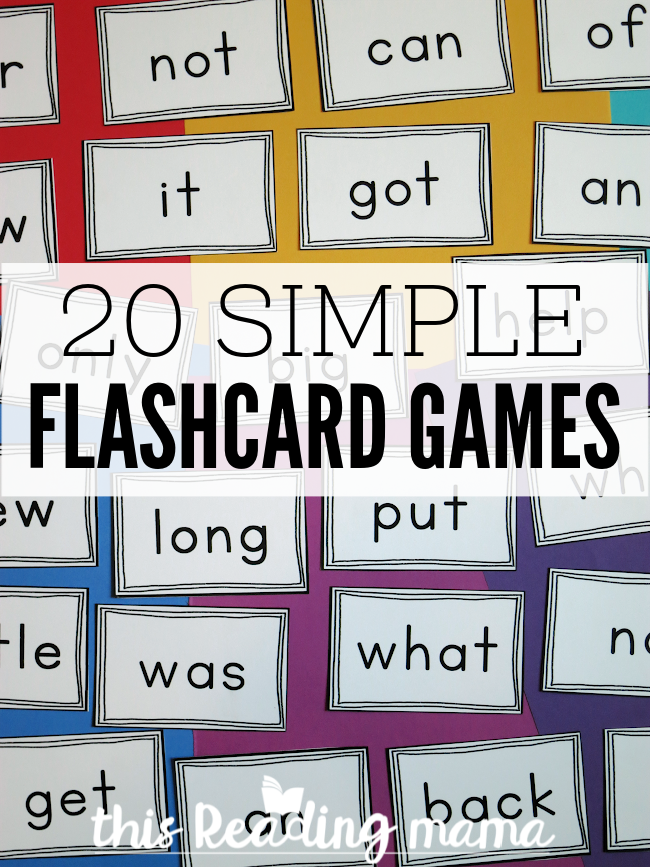
This post has a freebie for you to download! You’ll find the teal download button towards the bottom of this post. Click on it, and the PDF should open up for you. Be sure to visit here if you have trouble with downloading or printing the file.
20 Simple Flashcard Games
*I am a participant in the Amazon Services LLC Associates Program, an affiliate advertising program designed to provide a means for me to earn fees by linking to Amazon.com and affiliated sites.
1. Scavenger Hunt – Hide flashcards around the house. Give verbal {or written} clues to find the flashcards. Once found, learners solve the flashcard. For example, if it’s a number or letter, learners can identify it. If it’s a word, learners can read it. If it’s a math problem, learners can solve it.
2. Flashlight Hunt – {Needed: flashlight} This is a variation of #1, just try it at night using a flashlight.
3. Relay / Racing Games – Lay the flashcards across the room or across your driveway/yard. Call out a certain flashcard that your learner must solve or find. They run to grab it then run back.
4. Beanbag Toss – {Needed: a beanbag or a small stuffed animal} Lay the flashcards around on the floor. Learners toss a bean bag or small stuffed animal towards the cards. Whichever flashcard it lands closest to is solved/identified and collected.
5. Flashcard Jump – Lay the flashcards around on the floor {or outdoors}. Learners jump from one to the other.
6. I Spy – Lay your flashcards on the table or floor area. Give clues as to which flashcard you spy and your learner(s) use those clues to find the flashcard(s) you spy. For example, if you’re using CVC words, you could say, “I spy the word mat.” If you’re using it with multiplication flashcards, you could say, “I spy two multiplication facts that equal 24.”
7. Climb Up the Stairs – {Needed: a set of stairs} Place one flashcard on each step. As learners climb the step, they identify the letter, number, word, or work the math problem. How many steps can they climb? If they get stuck on a step, tell the answer. Reshuffle and replace the cards on the steps and see if your learner can climb higher the second time.
8. Toss it & Time it – {Needed: timer/stopwatch} Toss the stack of flashcards up in the air. How many can your learner collect and identify/solve? How quickly can they do it? Can they beat their time next time?
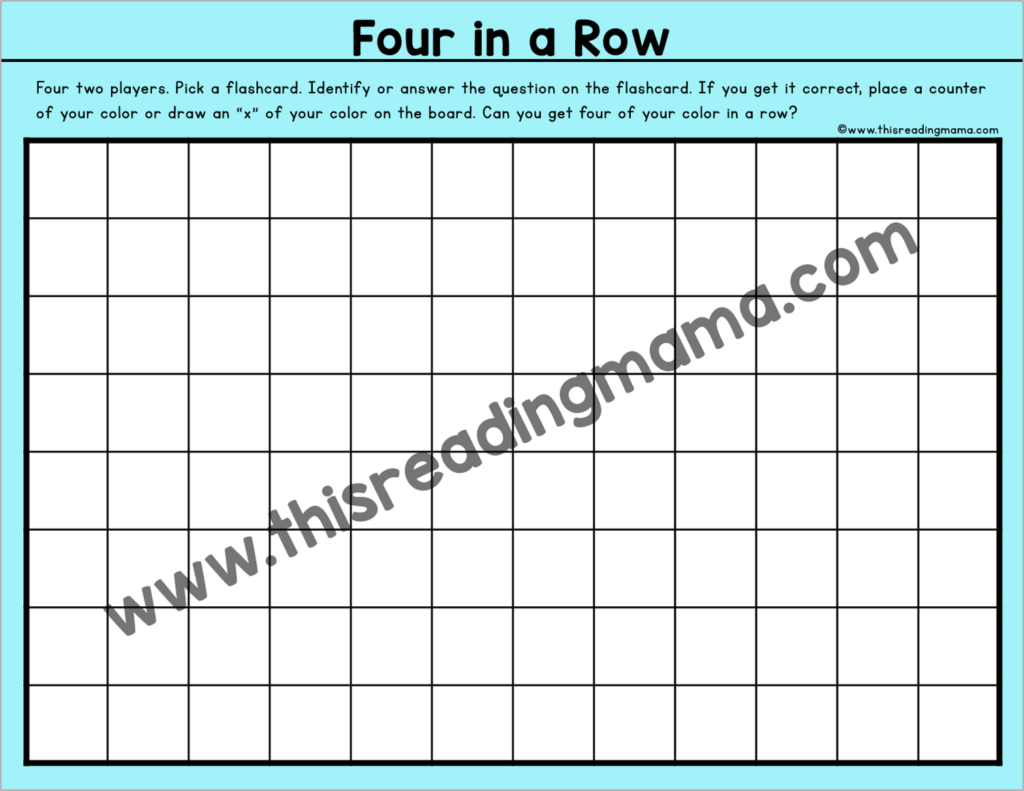
9. Four in a Row – {Needed: The free printable game board – found at the END of the post, colored counters, dry erase pocket, and/or dry erase markers} For two players, with one player using one color counter and the other player using another color.
Players take turns picking a card and identifying/solving it. If they get it correct, they place a counter in a square on the board. {You could also slip the game board into a dry erase pocket with learners using two different colored dry erase markers to draw x‘s on the board.} The goal of this game is to get four in a row.
10. Five Questions – {Optional: tape} One child picks a flashcard without seeing it. Learners can tape it to their forehead or simply hold it up so others can see it. The one child asks up to five questions to see if they can figure out what was on the flashcard.
11. Hide and Seek – {Needed: a penny or flat object, like a small piece of paper} Place the flashcards down on the table or floor area. Ask your learner to close his/her eyes. “Hide” the object under one of the flashcards. Give clues as to which flashcard it could be under.
For example, if I was using number flashcards, one of my clues might be, “The number comes between 5 and 10.” Learners use the clues you give to find the hidden object. My post, Snug as a Bug in a Rug, has a printable version for the –ug word family.
12. Flashcard Fishing – {Needed: paper clips, fishing pole} Attach paper clips to your flashcards, provide a fishing pole {dowel} with a magnet tied to the end or buy premade poles, and have learners fish for flashcards.
You can find several of our fishing games including our sight word fishing game, rhyming fishing game, and alphabet fishing game.
13. Tic-Tac-Toe – For two players, with one player being x and the other being o. Use a blank piece of paper to write some tic-tac-toe boards. Players take turns picking a card and identifying/solving it. If they get it correct, they write an x or o on the board, trying to get three in a row.
14. Old Maid – {Needed: a card from your deck that will serve as the “Old Maid”} This game is played just like the classic Old Maid, expect you’ll use your flashcards. I recommend it for 2-6 players.
15. Flyswatter Flashcards – {Needed: a clean flyswatter} Lay the flashcards out on the table or floor area. If the flashcards have letters, numbers, or words on them, call out one and have your learner swats it. If it’s a math problem, call out an answer and they find/swat the equation to get the answer. You could also call out the problem, they solve it and then swat it.
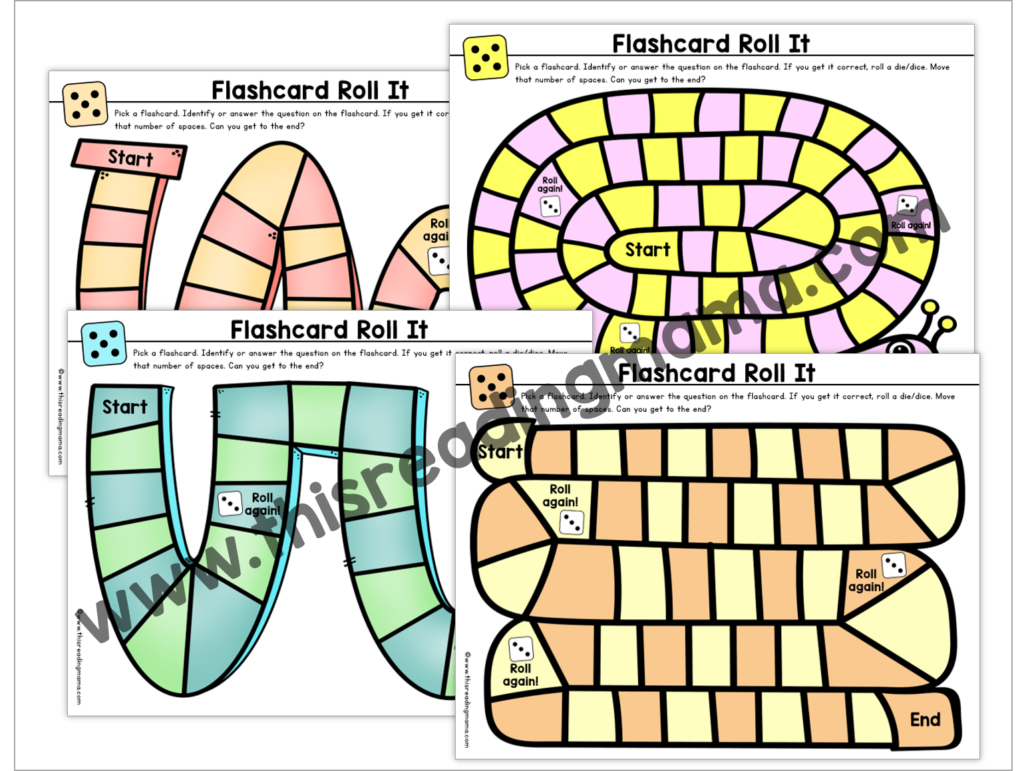
16. Flashcard Roll it – {Needed: The free printable game boards – found at the END of the post, die/dice, counters or manipulatives from other game boards, or you can use small objects on-hand} Use your flashcards for a simple game.
Shuffle your flashcards and place them facedown in a pile. Learners draw the top card and solve the card. If they get it correct, they roll a die {or dice} and move their counter or manipulative to the space.
17. Board Games + Flashcards – {Needed: favorite board games} Using the same principle as #16 above, integrate your flashcards into a favorite board game you already own. For example, if you integrate it into Candy Land, players would draw the flashcard, solve the card, then draw one of the Candy Land cards to know where to move on the board.
Note: The following flashcard games need more than one set of your flashcards.
18. Slap It – For two players. {This game works best for identifying letters, numbers, or words.} You’ll need three to four of each kind of flashcard in the deck for this game to work. Shuffle all the cards and deal them to both players.
One at a time, players take turns placing their card down in their own pile at the center of the table. As they do, they identify what is on the card. If the two cards on the top of each pile match, the first player to slap the cards gets to keep all the flashcards. The goal is to get all the cards by the end of the game.
19. Go Fish – This is a classic card game which requires you to have two or four of every flashcard to make a set.
20. Memory Match – This one is a classic game. This requires that you have matches for every flashcard. They don’t have to be perfect matches though.
For example, it could be a number matched with the fingers that represent that number, like you see in the image above. It could be a match between words and pictures. Turn the flashcards over, two at a time to find the matches. {My kids enjoy this one because I almost always lose.}
Grab your free, printable flashcard game boards here:
Now, go unwrap and enjoy those flashcards!
~Becky
You Might Also Enjoy {Click on the images}:
10 Hands-On Ways to Use Alphabet Flashcards
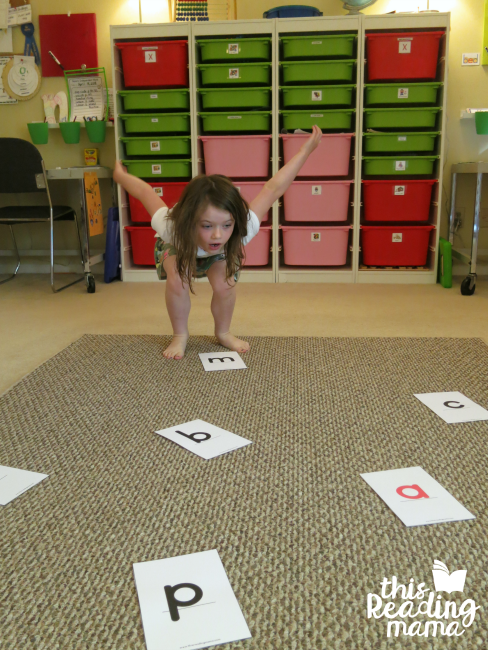
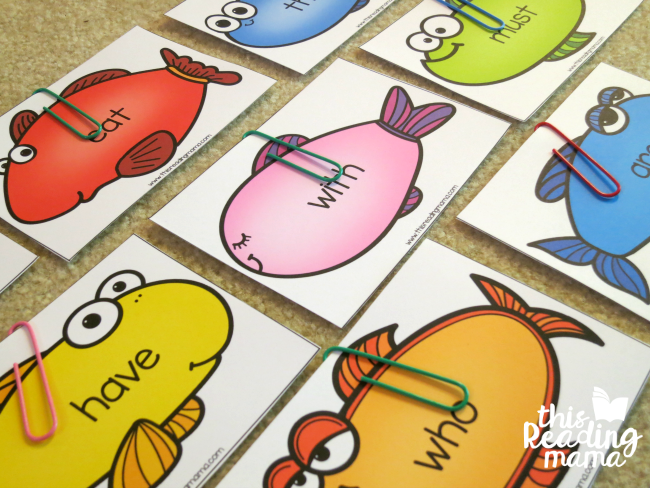


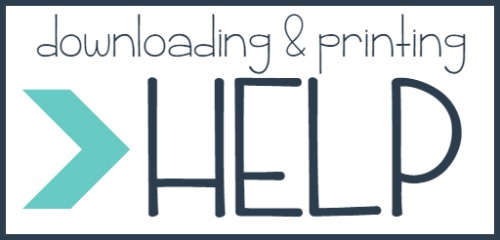

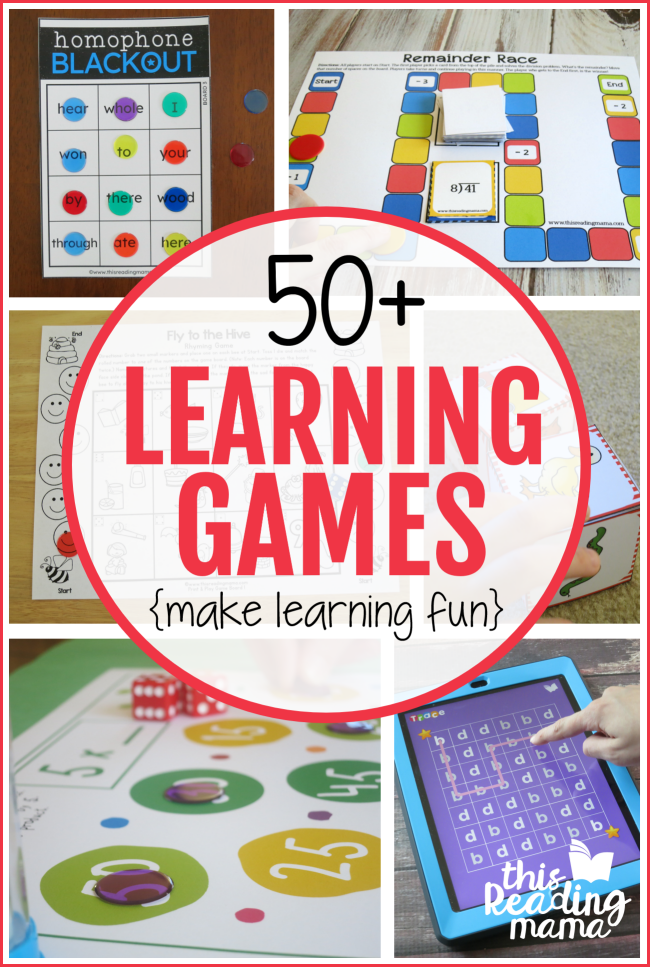
I love these! Thank you for providing them free. In my reading intervention class, we hang one on the white board and use magnetic pieces to move around the board. The students have to get up to move their piece, and they love standing up to read the flashcard word. The students LOVE it!
Brilliant idea!